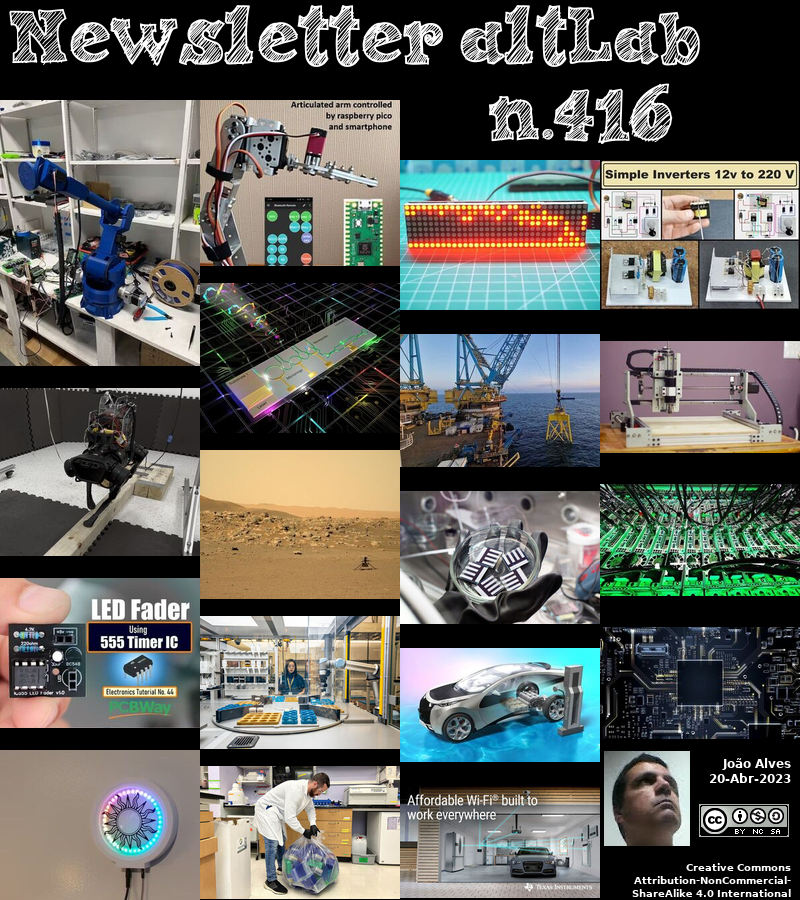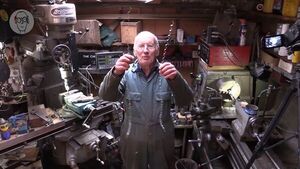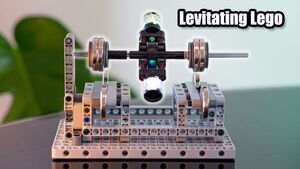2023-04-20 - Nº 416
Editorial
Esta é a Newsletter Nº 416 que se apresenta com o mesmo formato que as anteriores. Se gostar da Newsletter partilhe-a!
Todas as Newsletters encontram-se indexadas no link.
Esta Newsletter tem os seguintes tópicos:
Faz hoje anos que nascia, em 1786, o engenheiro francês Marc Séguin. Ele é o inventor da ponte suspensa com cabo de arame e da caldeira com motor a vapor tubular. Séguin (um sobrinho de Joseph Montgolfier, o balonista pioneiro) desenvolveu um interesse inicial em maquinaria. Em 1822, ele estava a estudar a resistência dos cabos de arame. Com o seu irmão Camille, estudou os princípios da ponte suspensa, na altura construída com cabos de corrente. Em 1824, construíram uma ponte suspensa de cabos de arame paralelos sobre o rio Rhône em Tournon, a primeira ponte deste tipo, depois copiada em todo o mundo. Séguin também melhorou a eficiência da locomotiva com a sua invenção da caldeira de tubos de fogo múltiplos, no lugar da caldeira de tubos de água utilizada pelos primeiros motores a vapor. Os irmãos colaboraram na construção da primeira estrada de ferro francesa (1824-33).
Faz também hoje anos que nascia, em 1818, o inventor alemao-americano Heinrich Göbel. Ele tinha desenvolvido lâmpadas incandescentes comparáveis às inventadas em 1879 por Thomas Alva Edison. Göbel nunca solicitou uma patente. Em 1893, a Edison Electric Light Company processou três fabricantes de lâmpadas incandescentes por infringir a patente de Edison. A defesa dessas empresas alegou que a patente de Edison foi anulada por causa da mesma invenção de Göbel 25 anos antes, que veio a ser conhecida como a "defesa de Göbel".
Faz igualmente hoje anos que nascia, em 1860, o inventor norte-americano Charles Gordon Curtis. Ele concebeu uma turbina de vapor amplamente utilizada em centrais eléctricas e em propulsão marítima. Ele foi advogado de patentes durante oito anos. Patenteou a primeira turbina de gás dos Estados Unidos (1899). Entre as suas outras realizações, a turbina de vapor de múltiplos estágios Curtis (patenteada em 1896, vendeu direitos à GE em 1901) exigiu um décimo do espaço e pesou um oitavo tanto quanto as máquinas que substituiu. O gerador Curtis era a turbina de vapor mais potente do mundo e representava um avanço significativo na capacidade das turbinas de vapor. Apesar da sua elevada potência, esta máquina custou muito menos do que os geradores de motores a vapor alternativos contemporâneos com a mesma potência.
Faz também hoje anos que nascia, em 1918, o físico sueco Kai Manne Börje Siegbahn. Ele partilhou (com Nicolaas Bloembergen e Arthur L.Schawlow) o Prémio Nobel da Física de 1981 por "a sua contribuição para o desenvolvimento da espectroscopia electrónica de alta resolução". Ele analisou os electrões resultantes que foram eliminados do interior de um átomo por um fotão de raios X de alta energia. Assim, pôde medir a energia de ligação de electrões atómicos com maior precisão do que era possível anteriormente. Além disso, uma vez que essa energia de ligação dependia um pouco do ambiente químico do átomo, isto proporcionou uma nova ferramenta de análise química-ESCA (Electron Spectroscopy for Chemical Analysis). A ESCA é agora utilizada por centenas de laboratórios em todo o mundo para investigar reacções de superfície, tais como corrosão ou reacções catalíticas, e outras também de grande importância na química industrial. O seu pai, Karl Manne Georg Siegbahn, recebeu o Prémio Nobel da Física de 1924.
Por fim, faz hoje anos que nascia, em 1927, o físico suíço K. Alex Müller. Ele partilhou (com J. Georg Bednorz) o Prémio Nobel da Física de 1987 pela sua descoberta conjunta da supercondutividade em certas substâncias a temperaturas mais elevadas do que se pensava ser possível alcançar anteriormente. Assustaram o mundo ao relatar a supercondutividade num material cerâmico estratificado a uma temperatura então recorde de 33 graus acima de zero absoluto. A sua descoberta estabeleceu novas pesquisas em todo o mundo sobre materiais relacionados que produziram dezenas de novos supercondutores, acabando por atingir uma temperatura de transição de 135 kelvin.
Em 1902, Pierre e Marie Curie isolaram um grama de cloreto de rádio puro, a primeira amostra do elemento radioactivo. Tinham-no refinado a partir de oito toneladas de minério de pitchblende. Anteriormente, em 1898, os Curies descobriram a radioactividade do pitchblende, que mais tarde identificaram como sendo devida ao rádio e ao polónio. Pelo seu trabalho de isolamento do sal de rádio em 1902, foi-lhe concedido o doutoramento em ciências em Junho de 1903. O Prémio Nobel da Física foi atribuído em 1903, conjuntamente a Marie e ao seu marido, Pierre. Marie continuou o seu trabalho e finalmente conseguiu isolar o rádio puro metálico em 1910. Recebeu o Prémio Nobel da Química em 1911, tornando-se a primeira pessoa a ganhar dois Nobels.
Nesta semana que passou foi lançada a nova versão da distribuição Fedora para linux. A versão 38 foi lançada antes do prazo e traz como principais novidades o GNOME 44, o gestor de pacotes dnf5, a versão 13 do compilador GCC, Golang 1.20, LLVM 16, Ruby 3.2, TeXLive 2022, PHP 8.2, Python 3.11 assim como o Kernel Linux 6.2.
Foi também lançada nesta semana que passou a nova versão da distribuição de Linux Ubuntu. A versão 23.04 designada por Lunar Lobster tem como principais novidades um novo instalador, atualização do Python 3.11, golang 1.20, Rust 1.67, OpenJDK 17, Ruby 3.1, o GNOME 44, Firefox 111, Libreoffice 7.5.2 e muitas outras atualizações de pacotes de software open source populares. Vem também com o Kernel 6.2 do Linux.
Na Newsletter desta semana apresentamos diversas noticias, artigos científicos, projetos de maker e alguns vídeos interessantes.
 João Alves ([email protected])
João Alves ([email protected])
O conteúdo da Newsletter encontra-se sob a licença  Creative Commons Attribution-NonCommercial-ShareAlike 4.0 International License.
Creative Commons Attribution-NonCommercial-ShareAlike 4.0 International License.
Novidades da Semana

Announcing Fedora Linux 38
"Today I’m excited to share the results of the hard work of thousands of Fedora Project contributors: the Fedora Linux 38 release is here! With this release, we’re starting a new on-time streak. In fact, we’re ready a week early! As always, you should make sure your system is fully up-to-date before upgrading from a previous release. Can’t wait to get started? Download while you read!" [...]

Canonical releases Ubuntu 23.04 Lunar Lobster
"New installer, Active Directory login and gaming performance enhance Ubuntu Desktop for work and play Today Canonical announces the release of Ubuntu 23.04, codenamed “Lunar Lobster”. Available to download and install from https://ubuntu.com/download. “This Ubuntu milestone release demonstrates our progress in raising the bar for the enterprise developer desktops, thanks to our best-in-class Linux integration with Active Directory Domain Services and now Azure Active Directory”, said Mark Shuttleworth, CEO of Canonical. “Our expanded investment in Ubuntu gaming means your downtime is just as satisfying”. New installer scales up desktop deployments The new Ubuntu Desktop installer marks a significant step forward for enterprise deployment and customisation at scale. Our unified Ubuntu server and desktop installation engine, Subiquity, supports the same autoinstall configuration workflows for both desktops and servers." [...]
Outras Notícias

ESA’s Juice lifts off on quest to discover secrets of Jupiter’s icy moons
"ESA’s Jupiter Icy Moons Explorer (Juice) lifted off on an Ariane 5 rocket from Europe’s Spaceport in French Guiana at 14:14 CEST on 14 April. The successful launch marks the beginning of an ambitious voyage to uncover the secrets of the ocean worlds around giant planet Jupiter. Following launch and separation from the rocket, ESA’s European Space Operations Centre (ESOC) in Darmstadt, Germany, confirmed acquisition of signal via the New Norcia ground station in Australia at 15:04 CEST. The spacecraft’s vast 27 m long solar arrays unfurled into their distinctive cross shapes at 15:33 CEST, ensuring Juice can travel to the outer Solar System. The completion of this critical operation marked the launch a success. “ESA, with its international partners, is on its way to Jupiter,” says ESA Director General Josef Aschbacher." [...]

NASA’s Ingenuity Mars Helicopter Completes 50th Flight
"This image of NASA's Ingenuity Mars Helicopter was taken by the Mastcam-Z instrument of the Perseverance rover on June 15, 2021. The location, Airfield D, is just east of the Séítah geologic unit. This image of NASA’s Ingenuity Mars Helicopter was taken at “Airfield D” by the Mastcam-Z instrument on the Perseverance rover on June 15, 2021, the 114th Martian day, or sol, of the mission. The rotorcraft completed its 50th flight on April 13, 2023. Credit: NASA/JPL-Caltech/ASU/MSSS Full Image Details The history-making rotorcraft has recently been negotiating some of the most hazardous terrain it’s encountered on the Red Planet. NASA’s Ingenuity Mars Helicopter has completed its 50th flight on Mars. The first aircraft on another world reached the half-century mark on April 13, traveling over 1,057.09 feet (322.2 meters) in 145.7 seconds." [...]
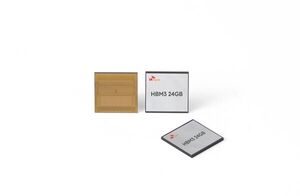
SK hynix Develops Industry’s First 12-Layer HBM3, Provides Samples To Customers
"SK hynix Inc. (or “the company”, www.skhynix.com) announced today it has become the industry’s first to develop 12-layer HBM3 product with a 24 gigabyte (GB)2memory capacity, currently the largest in the industry, and said customers’ performance evaluation of samples is underway. “The company succeeded in developing the 24GB package product that increased the memory capacity by 50% from the previous product, following the mass production of the world’s first HBM3 in June last year,” SK hynix said. “We will be able to supply the new products to the market from the second half of the year, in line with growing demand for premium memory products driven by the AI-powered chatbot industry.” SK hynix engineers improved process efficiency and performance stability by applying Advanced Mass Reflow Molded Underfill (MR-MUF) technology to the latest product, while Through Silicon Via (TSV) technology reduced the thickness of a single DRAM chip by 40%, achieving the same stack height level as the 16GB product. The HBM, first developed by SK hynix in 2013, has drawn broad attention from the memory chip industry for its crucial role in implementing generative AI that operates in high-performance computing (HPC) systems. The latest HBM3 standard, in particular, is considered the optimal product for rapid processing of large volumes of data, and therefore its adoption by major global tech companies is on the rise. SK hynix has provided samples of its 24GB HBM3 product to multiple customers that have expressed great expectation for the latest product, while the performance evaluation of the product is in progress." [...]

Nexperia releases leading-edge 650 V Silicon Carbide diodes for demanding power conversion applications
"Nexperia, the expert in essential semiconductors, today introduced a 650 V Silicon Carbide (SiC) Schottky diode designed for power applications which require ultra-high performance, low loss, and high efficiency. The 10 A, 650 V SiC Schottky diode is an industrial-grade part that addresses the challenges of demanding high voltage and high current applications. These include switched-mode power supplies, AC-DC and DC-DC converters, battery-charging infrastructure, uninterruptible power supplies and photovoltaic inverters and allow for more sustainable operations. Data centers, for example, equipped with power supplies designed using Nexperia's PSC1065K SiC Schottky diode will be better placed to meet rigorous energy efficiency standards than those using solely silicon-based solutions. The PSC1065K delivers leading-edge performance with temperature-independent capacitive switching and zero recovery behavior culminating in an outstanding figure-of-merit (QC x VF). Its excellent switching performance is almost entirely independent of current and switching speed variations." [...]

Intel Dives into the Future of Cooling
"Extending Moore’s Law means putting more transistors on an integrated circuit and, increasingly, adding more cores. Doing so improves performance but requires more energy. Over the past decade, Intel estimates it has saved 1,000 terawatt hours of electricity through the improvements its engineers have made to processors. These advances are complemented by cooling technologies – fans, in-door coolers, direct-to-chip cooling – that further manage heat, conserve energy and reduce carbon emissions. These cooling features require up to 40% of a data center’s energy consumption1. As Intel looks to increase performance in the future, improvements need to be accomplished in an energy-efficient way, and air cooling may not be the solution." [...]

Lattice Extends Low Power FPGA Portfolio with Launch of MachXO5T-NX Advanced System Control FPGAs
" Lattice Semiconductor (NASDAQ: LSCC), the low power programmable leader, today announced the Lattice MachXO5T™-NX family of advanced system control FPGAs designed to address customer challenges related to growing system management design complexity. The latest low power FPGAs based on the Lattice Nexus™ platform, MachXO5T-NX FPGAs feature advanced connectivity with PCIe®, increased logic and memory resources, and enhanced security. Combined with class-leading power efficiency, size, and reliability, these new low power FPGAs bring Lattice’s long-standing leadership in control FPGAs to a broader set of control function designs and applications for enterprise networking, machine vision, and industrial IoT. “As the pace of technological innovation accelerates and system management designs become more complex, the need for advanced processing capabilities increases,” said Dan Mansur, Vice President, Product Marketing, Lattice Semiconductor. “Lattice MachXO5T-NX FPGAs equip our customers with more capacity, faster I/O, and enhanced security features in the low power, small size envelopes to help them simplify system integration while maintaining power efficiency, compatibility, and performance.” Key features and performance highlights of the new low power Lattice MachXO5T-NX FPGAs include: - Control FPGAs with PCIe - Featuring hardened PCIe Gen 2 interfaces between the host processor and the control FPGA. - Increased logic and memory resources - Up to 3.4X more embedded memory (7.2 Mb) than competing FPGAs of a similar class, minimizing the need for external memory." [...]

TI makes Wi-Fi® technology more robust and affordable for connected IoT applications
"New SimpleLink™ wireless connectivity devices enable efficient Wi-Fi 6 and Bluetooth® Low Energy 5.3 connections in any environment Texas Instruments (TI) (NASDAQ: TXN) today introduced a new SimpleLink™ family of Wi-Fi 6 companion integrated circuits (ICs) to help designers implement highly reliable, secure and efficient Wi-Fi connections at an affordable price for applications that operate in high-density or high-temperature environments up to 105ºC. The first products in TI’s new CC33xx family include devices for Wi-Fi 6 only or for Wi-Fi 6 and Bluetooth Low Energy 5.3 connectivity in a single IC. When attached to a microcontroller (MCU) or processor, the CC33xx devices enable a secure Internet of Things (IoT) connection with reliable radio-frequency (RF) performance in broad industrial markets such as grid infrastructure, medical and building automation. For more information, see www.ti.com/cc33xx-pr. "The adoption of Wi-Fi 6 and Wi-Fi 6E is accelerating, with 2.5 billion Wi-Fi 6 devices expected to ship worldwide in 2023," said Kevin Robinson, CEO of Wi-Fi Alliance. "Today’s Wi-Fi is well suited to address a variety of industrial IoT applications, and innovation from companies like Texas Instruments is helping expand the number of applications, such as electric vehicle charging systems, smart meters and smart appliances, that can rely on Wi-Fi to deliver reliable, consistent, and efficient connectivity in the IoT market."" [...]

Rambus Accelerates AI Performance with Industry-Leading 24 Gb/s GDDR6 PHY
" Rambus Inc. (NASDAQ: RMBS), a premier chip and silicon IP provider making data faster and safer, today announced a new product milestone for GDDR6 memory interface performance. The Rambus GDDR6 PHY delivers a market-leading data rate of up to 24 Gigabits per second (Gb/s), providing 96 Gigabytes per second (GB/s) of bandwidth per GDDR6 memory device. As part of a system-level solution, the Rambus GDDR6 offering enables cost-efficient, high-bandwidth memory performance for AI/ML, graphics and networking applications. “With the new level of performance achieved by our GDDR6 PHY, designers can deliver the bandwidth needed by the most demanding workloads,” said Sean Fan, chief operating officer at Rambus. “As with our industry-leading HBM3 memory interface, this latest achievement demonstrates our continued commitment to advancing state-of-the-art memory performance to meet the needs of advanced computing applications such as generative AI.” In addition to industry-leading performance of 24 Gb/s, the Rambus GDDR6 PHY has been fully optimized to meet the needs of AI/ML and other advanced applications that require a high-bandwidth, low latency memory solution. Achieving operation at 24 Gb/s relies on Rambus renowned expertise in signal integrity and power integrity (SI/PI) for design of the PHY, chip package and PCB." [...]

STMicroelectronics introduces automotive inertial module with certified ASIL B software library for a broad range of automotive applications
"The STMicroelectronics ASM330LHB automotive-qualified MEMS inertial-sensing module provides accurate measurements for a wide variety of vehicle functions and, with the dedicated software provided, addresses functional-safety applications up to ASIL B1. The module contains a 3-axis digital accelerometer and 3-axis digital gyroscope, designed for a lifetime on the road, and provides a six-channel synchronized output. Its high-accuracy inertial measurements are used to improve the precise positioning of the car in context. It can support ADAS or vehicle-to-everything (V2X) communication, help stabilize key sensing systems like radar, lidar and visual cameras, and assist semi-automated driving applications up to L2+. Additionally, it can be used to enable a variety of functionalities in the car body. With the companion software engine, the ASM330LHB supports the growing adoption of automotive systems that require safety integrity up to level B." [...]

AMD Bolsters Embedded Portfolio with New Ryzen Embedded 5000 Series Processors for Networking Solutions
"AMD (NASDAQ: AMD) today announced the availability of its high-performance AMD Ryzen™ Embedded 5000 Series, a new solution for customers requiring power-efficient processors optimized for “always on” networking firewalls, network-attached storage systems and other security applications. The Ryzen Embedded 5000 Series rounds out the “Zen 3”-based AMD embedded processor portfolio which also includes the Ryzen Embedded V3000 and EPYC™ Embedded 7000 series families. Built on 7nm technology with planned five-year manufacturing availability, and equipped with 6, 8, 12 or 16 cores and 24 lanes of PCIe® Gen4 connectivity, Ryzen Embedded 5000 Series processors are designed for enterprise reliability to support the consistent uptime requirements needed by security and networking customers. Ryzen Embedded 5000 Series processors include robust reliability, availability and serviceability (RAS) features, including an ECC-supported memory subsystem. With a thermal design power (TDP) profile ranging from 65W to 105W, Ryzen Embedded 5000 processors enable the reduction of overall system cooling footprint for space-constrained and cost-sensitive applications. “Ryzen Embedded 5000 processors deliver the ideal combination of performance and reliability required for 24x7 security and networking applications,” said Rajneesh Gaur, corporate vice president & general manager, Embedded Solutions Group, AMD." [...]

Elon Musk's SpaceX's Starship rocket explodes minutes after launching from Texas
"SpaceX’s Starship rocket blasted off on its first test flight on Thursday but failed minutes after rising from the launch pad. The two-stage rocket ship, standing taller than the Statue of Liberty at 120 metres high, blasted off from the company's Starbase spaceport and test facility east of Brownsville, Texas, for what SpaceX hoped, at best, would be a 90-minute debut flight into space. A live SpaceX webcast of the lift-off showed the rocket ship rising from the launch tower into the morning sky as the Super Heavy's raptor engines roared to life in a ball of flame and billowing clouds of exhaust and water vapour. But less than four minutes into the flight, the upper-stage Starship failed to separate as designed from the lower-stage Super Heavy, and the combined vehicle was seen flipping end over end before exploding. Nevertheless, SpaceX officials on the webcast cheered the feat of getting the fully integrated Starship and booster rocket off the ground for a clean launch and declared the brief episode a successful test flight. After separating, the spacecraft was supposed to continue east and attempt to circle the world, before crashing into the Pacific near Hawaii." [...]

World’s deepest offshore wind turbine foundation installed in Scottish waters
"The world’s deepest wind turbine foundation has been installed at what will be Scotland’s largest offshore windfarm – Seagreen – off the coast of Angus. On Friday, the foundation (or ‘jacket’ as is the industry term) was transported to the project site on a barge operated by main contractor Seaway 7 where it was met by the Saipem 7000 – the semisubmersible crane vessel which is used to lift each of the 2,000-tonne turbine foundations into place. The installation of the jacket means Seagreen has now topped its own record from October 2022, when a previous foundation was installed at a depth of 57.4 metres (approximately 188 feet). The deepest foundation has been installed at a depth of 58.6 metres. The significant milestone also marks the installation of the 112th jacket at the 114-wind turbine wind farm which is a £3bn joint venture between SSE Renewables and TotalEnergies. The final wind turbine foundation is expected to be installed later this week Each foundation will support a Vestas V164-10 MW turbine." [...]
Ciência e Tecnologia
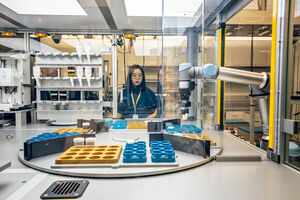
Meet the Autonomous Lab of the Future
"Robots operate instruments and artificial intelligence makes decisions to find useful new materials at the A-Lab To accelerate development of useful new materials, researchers are building a new kind of automated lab that uses robots guided by artificial intelligence. “Our vision is using AI to discover the materials of the future,” said Yan Zeng, a staff scientist leading the A-Lab at the Department of Energy’s Lawrence Berkeley National Laboratory (Berkeley Lab). The “A” in A-Lab is deliberately ambiguous, standing for artificial intelligence (AI), automated, accelerated, and abstracted, among others. Scientists have computationally predicted hundreds of thousands of novel materials that could be promising for new technologies – but testing to see whether any of those materials can be made in reality is a slow process. Enter A-Lab, which can process 50 to 100 times as many samples as a human every day and use AI to quickly pursue promising finds. A-Lab could help identify and fast-track materials for several research areas, such as solar cells, fuel cells, thermoelectrics (materials that generate energy from temperature differences), and other clean energy technologies." [...]

Researchers Suggest New Way To Boost Perovskite Solar Cell Performance
"Scientists at ITMO University and their colleagues from the St. Petersburg Academic University and University of Tor Vergata (Italy) have developed high-performance perovskite solar cells. The improvement is thanks to the use of semiconductors based on wire-like nanocrystals. The technology is said to offer up new prospects for the production of next-gen solar power stations and optical devices. The results of the study were in ACS Applied Energy Materials. Today, solar cells are most often made with the use of silicon – of today’s solar photovoltaics market is taken up by such devices. And even though their energy conversion efficiency has grown by 16-20% (or even 24-26% in lab conditions) in the past 10-15 years, it’s still not quite so high." [...]
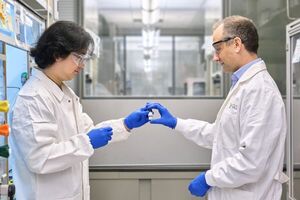
Renewable route to rubber material
"A venerable industrial method for making butadiene bounces back to prominence. A key ingredient in the manufacture of car tires and sneaker soles could be made sustainably, following new analysis of an old catalytic process. Butadiene, an essential component of synthetic rubber, is currently produced by the petrochemical industry from fossil reserves. But it could be efficiently made in a one-step reaction from renewable ethanol using a modernized version of an unusual old catalyst. “Butadiene is currently produced as a byproduct of the petrochemical industry, which can lead to shortages in its supply,” explains Sang-Ho Chung, a research scientist in the labs of Javier Ruiz-Martinez, with whom he co-led the work[1]. “Also, these routes are clearly not sustainable,” he adds." [...]

A message to meteorite hunters: Put down your magnets!
"A new study shows that simple hand magnets erase a meteorite’s magnetic memory. Each year, thousands of space rocks pierce through the Earth’s atmosphere and hit the ground as meteorites. These fragments of comets and asteroids can land anywhere but are most often spotted in open terrain, such as the deserts of Africa and the Antarctic blue ice, where a meteorite’s blackened exterior can stand out. Still, these extraterrestrial remnants can resemble Earth rocks, and to tell the difference meteorite hunters often expose their “finds” to hand magnets, which can attract more strongly to metal-rich meteorites than to terrestrial rocks. Meteorite hunters, dealers, collectors, and curators often rely on hand magnets to verify a meteorite’s identity. But a new MIT study finds that the same magnets used to identify a meteorite usually erase its magnetic memory." [...]
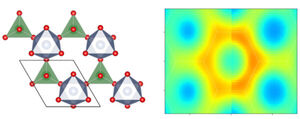
Physicists find unusual waves in nickel-based magnet
"Neutron scattering reveals coherent waves of ‘spin excitons’ in nickelate crystal Perturbing electron spins in a magnet usually results in excitations called “spin waves” that ripple through the magnet like waves on a pond that’s been struck by a pebble. In a new study, Rice University physicists and their collaborators have discovered dramatically different excitations called “spin excitons” that can also “ripple” through a nickel-based magnet as a coherent wave. In a study published in Nature Communications, the researchers reported finding unusual properties in nickel molybdate, a layered magnetic crystal. Subatomic particles called electrons resemble miniscule magnets, and they typically orient themselves like compass needles in relation to magnetic fields. In experiments where neutrons were scattered from magnetic nickel ions inside the crystals, the researchers found that two outermost electrons from each nickel ion behaved differently. Rather than aligning their spins like compass needles, the two canceled one another in a phenomenon physicists call a spin singlet." [...]
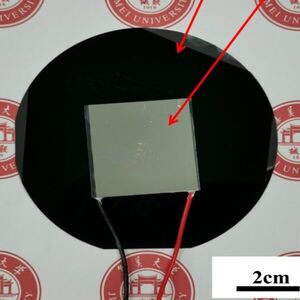
New passive device continuously generates electricity during the day or night
"Thermoelectric generator could provide reliable power for outdoor sensors or wearable electronics Researchers have developed a new thermoelectric generator (TEG) that can continuously generate electricity using heat from the sun and a radiative element that releases heat into the air. Because it works during the day or night and in cloudy conditions, the new self-powered TEG could provide a reliable power source for small electronic devices such as outdoor sensors. “Traditional power sources like batteries are limited in capacity and require regular replacement or recharging, which can be inconvenient and unsustainable,” said research team leader Jing Liu from Jimei University in China. “Our new TEG design could offer a sustainable and continuous energy solution for small devices, addressing the constraints of traditional power sources like batteries.” TEGs are solid state devices that use temperature differences to generate electricity without any moving parts. In the Optica Publishing Group journal Optics Express, Liu and a multi-institutional team of researchers describe and demonstrate a new TEG that can simultaneously generate the heat and cold necessary to create a temperature difference large enough to generate electricity even when the sun isn’t out. The passive power source is made of components that can easily be manufactured." [...]
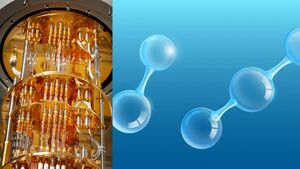
Swedish quantum computer applied to chemistry for the first time
"There are high expectations that quantum computers may deliver revolutionary new possibilities for simulating chemical processes. This could have a major impact on everything from the development of new pharmaceuticals to new materials. Researchers at Chalmers University have now, for the first time in Sweden, used a quantum computer to undertake calculations within a real-life case in chemistry. "Quantum computers could in theory be used to handle cases where electrons and atomic nuclei move in more complicated ways. If we can learn to utilise their full potential, we should be able to advance the boundaries of what is possible to calculate and understand," says Martin Rahm, Associate Professor in Theoretical Chemistry at the Department of Chemistry and Chemical Engineering, who has led the study. Within the field of quantum chemistry, the laws of quantum mechanics are used to understand which chemical reactions are possible, which structures and materials can be developed, and what characteristics they have." [...]
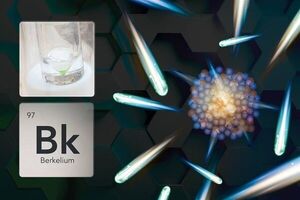
Getting Purer Berkelium, Faster than Ever
"The Science Researchers need a better way to extract individual heavy metal elements, called actinides, to obtain a purer product. In 2018, researchers discovered that the actinide berkelium, when oxidized, does not form negatively charged ions in solutions of high nitric acid, as other actinides do. This meant an anion exchange column could separate berkelium by absorbing other actinides with negatively charged ions. This system moves berkelium dissolved in highly concentrated nitric acid through a series of columns. The top column blocks negatively charged impurities. The lower column collects berkelium while positively charged impurities pass through." [...]

Quantum liquid becomes solid when heated
"Solids can be melted by heating, but in the quantum world it can also be the other way around: An experimental team has shown how a quantum liquid forms supersolid structures by heating. The scientists obtained a first phase diagram for a supersolid at finite temperature. Supersolids are a relatively new and exciting area of research. They exhibit both solid and superfluid properties simultaneously. In 2019, three research groups were able to demonstrate this state for the first time beyond doubt in ultracold quantum gases, among them the research group led by Francesca Ferlaino from the Department of Experimental Physics at the University of Innsbruck and the ÖAW Institute for Quantum Optics and Quantum Information (IQOQI) in Innsbruck. In 2021, Francesca Ferlaino's team studied in detail the life cycle of supersolid states in a dipolar gas of dysprosium atoms." [...]

Nagoya University researchers in Japan develop a new ultra-high-density sulfonic acid polymer electrolyte membrane for fuel cells
"In a project commissioned by the New Energy and Industrial Technology Development Organization (NEDO), researchers at Nagoya University in Japan have developed poly(styrenesulfonic acid)-based PEMs with a high density of sulfonic acid groups. One of the key components of environmentally friendly polymer electrolyte fuel cells is a polymer electrolyte membrane (PEM). It generates electrical energy through a reaction between hydrogen and oxygen gases. Examples of practical fuel cells include fuel cell vehicles (FCVs) and fuel cell combined heat and power (CHP) systems. The best-known PEM is a membrane based on a perfluorosulfonic acid polymer, such as Nafion, which was developed by DuPont in the 1960s. It has a good proton conductivity of 0.1 S/cm at 70-90 °C under humidified conditions." [...]

Recycling plastics from research labs
"With sustainability in mind, MIT’s EHS Lab Plastics Recycling Program gathers clean plastics from 212 MIT labs, recycling some 280 pounds per week. In 2019, MIT’s Environment, Health, and Safety (EHS) Office collaborated with several research labs in the Department of Biology to determine the feasibility of recycling clean lab plastics. Based on early successes with waste isolation and plastics collection, EHS collaborated with GreenLabs Recycling, a local startup, to remove and recycle lab plastics from campus. It has been a huge triumph. Today, EHS spearheads the campus Lab Plastics Recycling Program, and its EHS technicians regularly gather clean lab plastics from 212 MIT labs, transferring them to GreenLabs for recycling. Since its pilot stage, the number of labs participating in the program has grown, increasing the total amount of plastic gathered and recycled." [...]
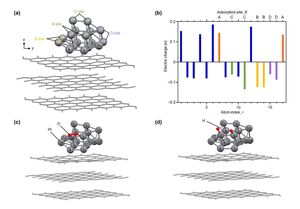
A Novel Platinum Nanocluster for Improved Oxygen Reduction Reaction in Fuel Cells
"Scientists have elucidated the reason for the new catalyst's high activity, which is 2.1 times higher than commercial platinum nanoparticle-based catalysts Hydrogen, derived from polymer electrolyte fuel cells (PEFCs), is an excellent source of clean energy. However, PEFCs require platinum (Pt), which is a limited resource. Some studies have shown that Pt nanoclusters (NCs) have higher activity than conventionally used Pt nanoparticles, however the origin of their higher activity is unclear. Now, researchers have synthesized a novel Pt NC catalyst with unprecedented activity and identified the reason for its high performance. The twin issues of climate change and the shortage of fossil fuels are the new cornerstones challenges of energy research. Polymer electrolyte fuel cells (PEFCs), which produce the clean fuel hydrogen, are one of the most promising options to tackle both these challenges." [...]
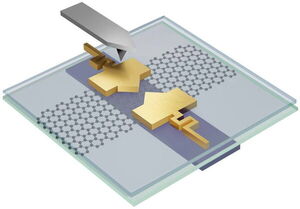
UC Irvine physicists discover first transformable nano-scale electronic devices
"The nano-scale electronic parts in devices like smartphones are solid, static objects that once designed and built cannot transform into anything else. But University of California, Irvine physicists have reported the discovery of nano-scale devices that can transform into many different shapes and sizes even though they exist in solid states. It's a finding that could fundamentally change the nature of electronic devices, as well as the way scientists research atomic-scale quantum materials. The study is published recently in Science Advances. "What we discovered is that for a particular set of materials, you can make nano-scale electronic devices that aren't stuck together," said Javier Sanchez-Yamagishi, an assistant professor of physics & astronomy whose lab performed the new research. "The parts can move, and so that allows us to modify the size and shape of a device after it's been made."" [...]
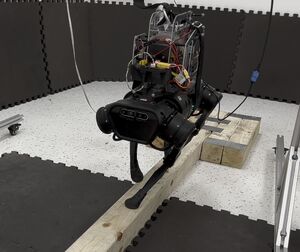
CMU Team Designs Four-Legged Robotic System That Can Walk a Balance Beam
"Researchers in Carnegie Mellon University's Robotics Institute (RI) have designed a system that makes an off-the-shelf quadruped robot nimble enough to walk a narrow balance beam -- a feat that is likely the first of its kind. "This experiment was huge," said Zachary Manchester, an assistant professor in the RI and head of the Robotic Exploration Lab. "I don't think anyone has ever successfully done balance beam walking with a robot before." By leveraging hardware often used to control satellites in space, Manchester and his team offset existing constraints in the quadruped's design to improve its balancing capabilities. The standard elements of most modern quadruped robots include a torso and four legs that each end in a rounded foot, allowing the robot to traverse basic, flat surfaces and even climb stairs. Their design resembles a four-legged animal, but unlike cheetahs who can use their tails to control sharp turns or falling cats that adjust their orientation in mid-air with the help of their flexible spines, quadruped robots do not have such instinctive agility." [...]

Researchers develop carbon-negative concrete
"A viable formula for a carbon-negative, environmentally friendly concrete that is nearly as strong as regular concrete has been developed at Washington State University. In a proof-of-concept work, the researchers infused regular cement with environmentally friendly biochar, a type of charcoal made from organic waste, that had been strengthened beforehand with concrete wastewater. The biochar was able to suck up to 23% of its weight in carbon dioxide from the air while still reaching a strength comparable to ordinary cement. The research could significantly reduce carbon emissions of the concrete industry, which is one of the most energy- and carbon-intensive of all manufacturing industries. The work, led by doctoral student Zhipeng Li, is reported in the journal, Materials Letters. “We’re very excited that this will contribute to the mission of zero-carbon built environment,” said Xianming Shi, professor in the WSU Department of Civil and Environmental Engineering and the corresponding author on the paper." [...]
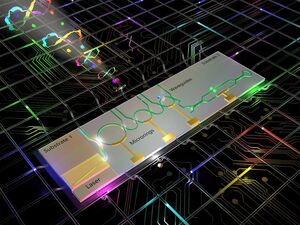
Quantum light source goes fully on-chip, bringing scalability to the quantum cloud
"The new development is scalable and suitable for use in photonic quantum computers An international team of researchers from Leibniz University Hannover (Germany), the University of Twente (Netherlands), and the start-up company QuiX Quantum has presented an entangled quantum light source fully integrated for the first time on a chip. “Our breakthrough allowed us to shrink the source size by a factor of more than 1000, allowing reproducibility, stability over a longer time, scaling, and potentially mass-production. All these characteristics are required for real-world applications such as quantum processors,” says Prof. Dr. Michael Kues, head of the Institute of Photonics, and board member of the Cluster of Excellence PhoenixD at Leibniz University Hannover. Quantum bits (qubits) are the basic building blocks of quantum computers and the quantum internet. Quantum light sources generate light quanta (photons) that can be used as quantum bits. On-chip photonics has become a leading platform for processing optical quantum states as it is compact, robust, and allows to accommodate and arrange many elements on a single chip." [...]
Projetos Maker
Diversos Projetos interessantes.

Motion Activated Light Communication Device
"Uses 2 Particle Argons to control a motion sensor, switch, and two lights that communicate with each other. For MEGR 3171 IOT Project. The idea for this project came about when Ruben and I met up to write our code. Our original design was a light that would be activated as a motion sensor for applications in commercial and residential environments. Since our project requires bidirectional communication between our two Argon devices, we decided this would be too simple. As we did more research on the applications of motion sensors and lights with two-way communication, we came up with the idea for a project that would let you wave your hand over a motion sensor to activate a light on another device, and then use a switch to activate the light on the opposite argon, allowing for communication to let others know that you are okay or to send a message." [...]

Button Mouse With XIAO
"So here's an intriguing project that uses an XIAO M0 to emulate a HID mouse, which can be used in place of a traditional mouse. As previously stated, the XIAO M0 is combined with a few buttons and a 3D enclosure to create this simple mouse. This Project is based on the HID functionality of the Atmega SAMD21 MCU inside the XIAO, HID stands for "Human Interface Device," and it refers to a type of device that allows humans to interact with computers. Examples of HID devices include keyboards, mice, game controllers, and touchscreens. HID is being used to enable communication between the microcontroller and a computer using USB. This allows the SAMD21 to function as a USB HID device, such as a keyboard or mouse." [...]

Morse Code Trainer, Communicator, and CW Keyer for esp32 based M5StickC Plus
"This project is a versatile Morse code trainer, communicator, and CW keyer designed for the M5StickC Plus device. It is inspired by the Morserino project, but with the goal of creating a much smaller, wrist-mounted device and is programmed from scratch as a programming exercise. The project features multiple modes for practicing, sending Morse code messages (https://vimeo.com/813324676), operating as a touch paddle and CW keyer(https://vimeo.com/813324676) and a bluetooth keyboard mode (https://vimeo.com/813661630). With a user-friendly interface and a custom-built add-on module with touch paddles and a 2.5mm plug for radio connection, this project is suitable for both beginners and experienced Morse code enthusiasts. Features - Touch keyer for practicing Morse code - Custom add-on module with touch paddles and a 2.5mm plug for radio connection - CW keyer mode for operating as a touch paddle and controlling a radio - Bluetooth Low Energy (BLE) keyboard support for sending Morse code characters as keyboard input - ESP-NOW communication for sending Morse code messages over Wi-Fi - Koch method trainer for learning Morse code progressively - Echo trainer for practicing Morse code by listening and repeating characters - Intuitive menu navigation - EEPROM data handling for storing user settings" [...]
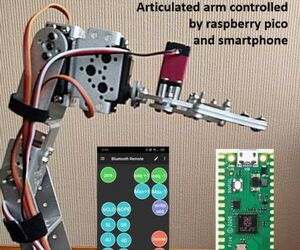
Automation of an Articulated Arm With Raspberry Pico
"Robotics is accessible to everyone and moreover it is simple to control. However, special attention should be paid to certain technical aspects. And more particularly to the handling of servomotors. The project uses readily available components. Once the components are assembled, they will be coordinated by a micropython program with the Thonny application. A previous version of this project was driven by arduino-IDE." [...]

Automatic Pico I2C Tester
"Define a series of steps for performing automatic tests of your I2C devices using just a Raspberry Pi Pico. The purpose While developing my latest project, I encountered the need to repeatedly test the device by transmitting several I2C commands in a specified order. In this way, I could ensure the target device would respond correctly after pushing the latest code changes. However, the transmitting microcontroller, typically an Arduino-based board, had to be programmed to send I2C data and print the results upon boot, which also meant any changes made to the controller required a reflash. My goal for this project was to build a device that could perform any kind of I2C-related task without the need for reprogramming if a change were to occur. Feature overview The most important aspect of this I2C probe is the fact that it works via a JSON file which can be dropped into the virtual storage device presented by the Raspberry Pi Pico's CircuitPython firmware." [...]

LED Fader Using 555 Timer IC
"In this tutorial, I am going to show you guys how to create a true LED fading effect using the 555 timer IC. Wanted to generate a LED fading effect (fade-in and fade-out) for my upcoming video tutorial using the 555 timer IC. I already have a video where I used LM358 Dual Operational Amplifier IC and another one with Arduino to generate the LED fading effect. YouTube, is full of video showing how to generate the fading effect using 555 timer IC. However, none of them produce a true fading effect. Some just fades-in but never fades-out." [...]

Power Supply V1.0
"Power supplies are the basic components that provide the correct voltage and current required for the operation of electronic devices. The voltage and current required for electronic devices often vary, so power supplies must provide output voltage and current that can be adjusted to suit different devices. In this project, a list of components required to make a power supply is given. These components include a voltage regulator, several diodes, several resistors, several polarized capacitors, several potentiometers, and a switch that provides the 12 volts DC output voltage necessary for the operation of many electronic devices. The power supply design begins in the first step with the use of a rectifier circuit to convert from an AC power supply to a DC power supply. The diodes (D1-D9) used in this circuit convert alternating current (AC) to direct current (DC)." [...]

Sunrise Alarm Clock
"The wall-mounted light simulates a sunrise 15 minutes before your alarm; so you can wake up to a sunrise any time of day! Story I always say that I'm a morning person in theory. I have had trouble getting up in the morning since I was in high school. Getting up is even harder if you frequently have to get up (even for part of the year) before the sun rises! Enter the sunrise alarm clock. This wall-mounted light will simulate a sunrise 15 minutes before your alarm." [...]
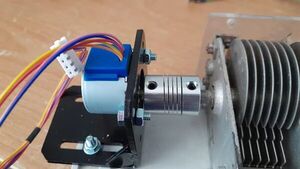
An Experimental Magnetic Loop Driven by Android and a Stepper Motor
"So I am a big fan of Kevin Loughin's YT channel and also of Mag Loops having already bought an unwanted YouLoop on Facebook Market Place. Watching this video Ham Radio - Magnetic loop transmitting antenna overview and details inspired me to aquire some parts. The first issue for a Mag Loop is TX power, the YouLoop is rated for 250mW, not going to get me far, the secret to a good Mag Loop is a variable capacitor form an old valve radio. This will handle the sort of voltages involved upto maybe 25w. I am QRP at 5w so not big deal. Sure enough a silent-key (amateur operator who has died) son was advertising some assorted parts, one box contained a couple of air dielectric capacitors." [...]

Simple Inverters 12V to 220V, comparision, testing...
"Simplest ways to make a 12V to 220V inverter, one with transistors and the other with Mosfets, and whether it is reasonable to make them This time I will explain two of the simplest ways to make a 12V to 220V inverter, one with transistors and the other with Mosfet. Most often this type of inverters are made from parts of old PC power supplies. At the end of the video you can follow the detailed way of making these inverters through many pictures. And now let's focus on the main purpose of this video to test the real capabilities of these devices. The first test device is made with MJE13007 type transistors. These are NPN Bipolar Power Transistors which are designed for Switching Power Supply Applications." [...]
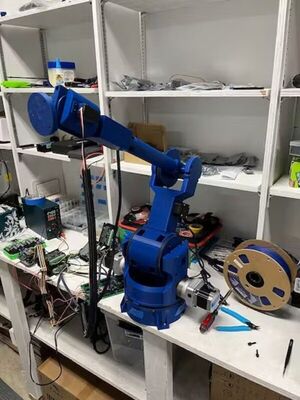
Build a 5-Axis, Industrial Grade Robotic Arm That Learns
"Build a really neat, highly accurate, meter-tall, robotic arm with industrial/memory capabilities that you can make yourself for cheap! Before we get started, I highly recommend going here to read the article. It's my original site so the quality is much better, and you have the opportunity to support my work if you choose. If an option pops up offering you to subscribe, just simply hit "No thanks" if you'd prefer not. A Quick Preview This is E.R.A., the 5-Axis Everything Robotic Arm with built-in position-remembering software and industrial capabilities. It also has an interchangeable end to make it useful for just about any circumstance." [...]

Audio Spectrum Visualizer Using Arduino & Matrix Display
"An audio spectrum visualizer using Arduino and matrix display is a device that displays audio frequencies in real-time through a pattern. An Audio Spectrum Visualizer is a device that displays the frequency components of an audio signal in a visual form. The device can be used for a wide range of applications, such as music visualization, sound level metering, and speech analysis. In this article, we will explore how to create an audio spectrum visualizer using an Arduino and a matrix display. Hardware Components Required To create an audio spectrum visualizer, we will need the following components: - Arduino Nano - Sound Sensor - LED matrix display (8x32) - Jumper wires - Breadboard - 5 Volt Power supply Audio Input Circuit The audio input circuit is responsible for amplifying and filtering the audio signal before it is fed into the Arduino. The circuit consists of three main parts: the amplifier, the filter, and the rectifier." [...]
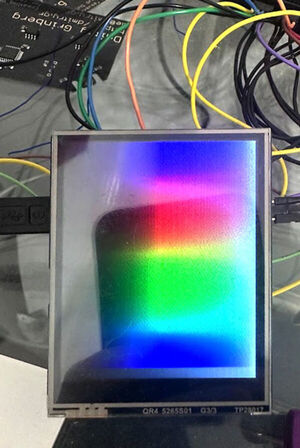
Using RP2040 PIO to drive a poorly-designed display
"I was searching for a display with at least 160x160 resolution and a resistive touch screen that would mate easily to RaspberryPi pico for my rePalm project. There were not many, actually. But I did come across this display at Waveshare - a 2.8inch 320x240 full-colour LCD. Without much further looking, I ordered a few and started planning the code to drive it. The goal was to have a framebuffer supporting 1, 2, and 4 bits per pixel greyscale, 8 bits per pixel indexed colour, and 16 bits per pixel full colour modes, while getting touch data in realtime. As this display does not support indexed colour or greyscale, that would need to be locally synthesized somehow." [...]

μLA: Micro Logic Analyzer for RP2040
"Turn you Raspberry Pi Pico (or any RP2040 board) into simple logic analyzer in 5 minutes. Turn you Raspberry Pi Pico (or any RP2040 board) into simple logic analyzer in 5 minutes. μLA is SUMP/OLS compatible logic analyzer firmware for RP2040 based boards. Features - 16 channels - 100 MHz sampling rate (250 MHz if you brave enough), 1 sample per system clock tick - 200 KB sample memory - Fast triggers using PIO Supported hardware - Raspberry Pi Pico - RP2040-Zero - All RP2040 based boards with USB connection Installation - Download latest μLA firmware build from Releases page - Hold the BOOTSEL button while connecting your board to the computer - Copy firmware file downloaded earlier to the RPi-RP2 disk - Connect to probe using PulseView or sigrok-cli - Enjoy" [...]
Secção Videos
Videos interessantes.
That's all Folks!



